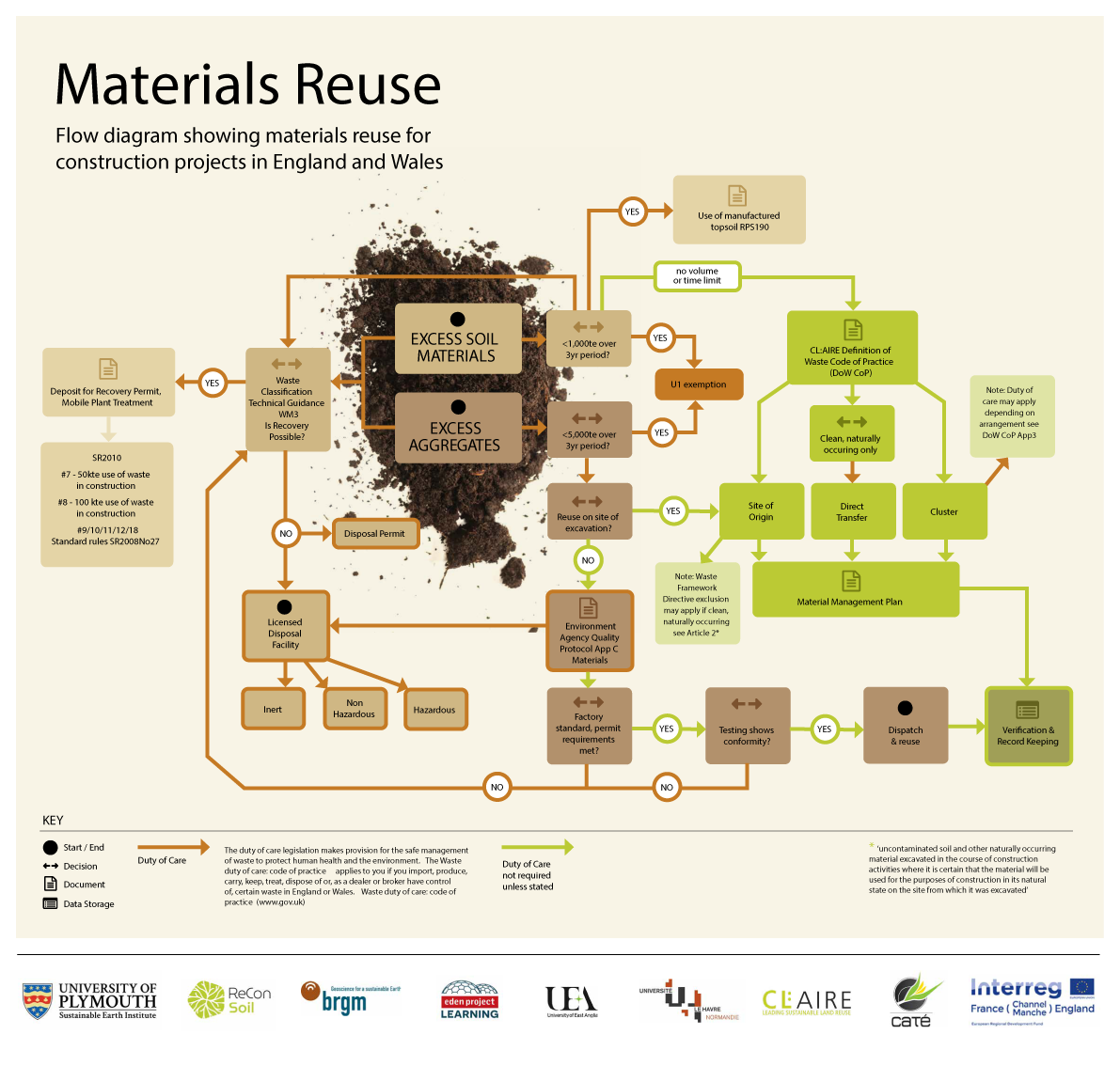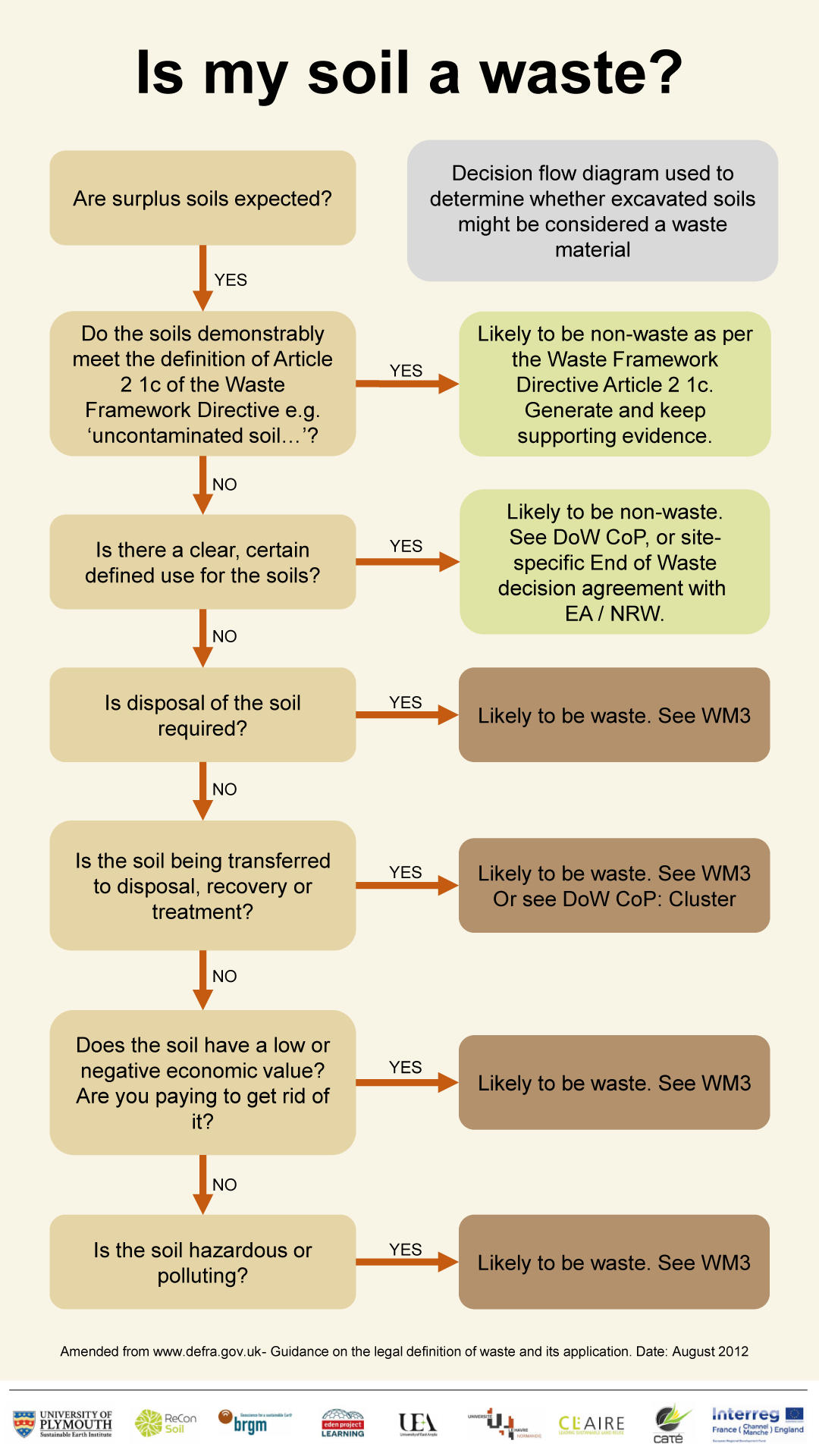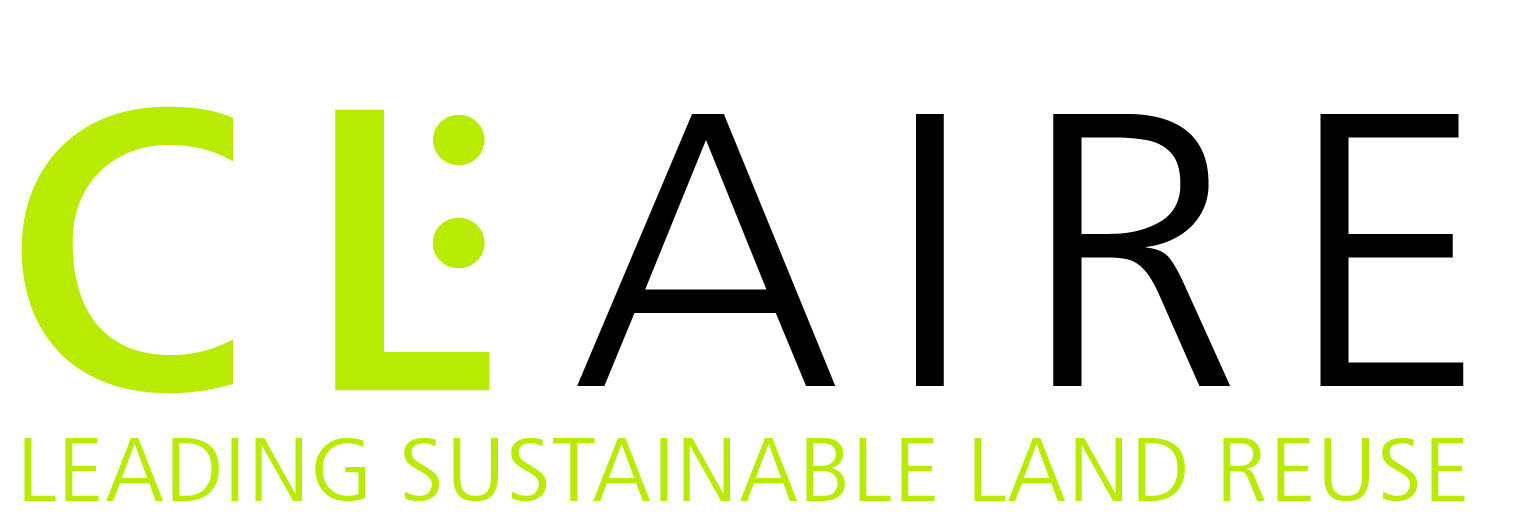| The ReCon Soil Toolkit | ||
| Reconstructed Soil Factsheets | Three factsheets detailing the physical, chemical and microbial properties of the three ReCon Soil recipes. | |
| ReCon Soil and DoW CoP Briefing | Short form summary document introducing the work of ReCon Soil and how it can fit within existing soils reuse guidance in England and Wales. | |
| DoW CoP Guidance Bulletin 3 | This bulletin serves to provide the reader with a summary of the Definition of Waste: Development Industry Code of Practice (DoW CoP) (CL:AIRE, 2011), its purpose and application and a reminder of the importance and value of managing soil sustainably. | |
|
Protocol for assessment of waste materials for use in reconstructed soils |
Guidance document on considerations to be made prior to reconstruction and deployment of soils. | |
| Materials reuse flow diagram | Flow diagram showing materials reuse for construction projects in England and Wales | |
| Is my soil a waste? Decision flow diagram | Decision flow diagram to determine whether soils are likely to be a waste. | |
| Register of Materials User Guide | User guide for the Register of Materials, the service that facilitates connections between Donor and Receiver sites to enable reuse. | |
| Carbon ReConer© Soil Recipe Design Tool | Tool in Excel that enables users to simulate the carbon stability profile of their reconstructed soils by combining proportions of assessed candidate materials. A manual for the use of this tool is included on sheet 2 of the document. Further information about the assessment of the materials can be found in the Factsheet - Carbon stability in ReCon Soil component materials | |
| Factsheet - Carbon stability in ReCon Soil component materials | This factsheet accounts the carbon stability profiles of two reference materials (cellulose and lignin) and 31 candidate component materials with potential to be used to construct soils. | |
| Factsheet - Carbon storage potential of ReCon Soil constructed soils | This factsheet provides the carbon storage data for three ReCon Soil constructed soils. The carbon storage potentials of these soils have been benchmarked against native ‘natural’ soils. | |
| Paper - A Life Cycle Assessment for Reconstructed Soil | Life Cycle Assessment including tables of impacts for soil components, soil amendments, transport and other machinery. | |
| Life Cycle Assessment: A step-by-step guide to estimating environmental impacts | A step by step guide to enable industry users to produce a Life Cycle Assessment on the reconstruction and reuse of their own soils. | |
| Cost Benefit Analysis: A step-by-step guide to estimating economic impacts | A step by step guide to enable industry users to produce a Cost Benefit Analysis on the reconstruction and reuse of their own soils. | |
| Case study - Reconstructed soils from waste - a field study at The Lost Gardens of Heligan | Case study on the deployment of reconstructed soils alongside alternative soil preparation methods at a public demonstration plot. | |
|
Sustainable soil management during construction stockpiling – Bicton field trial |
Case study on the impact of soil management and stockpiling on soil quality, structure and biodiversity. | |
|
The impact of cover crops on microbial activity and community composition in stockpiled soils |
Case study on the impact of cover crops on microbial activity and community composition. | |
|
Effect of electro-kinetic remediation of dredged sediments on zucchini growth |
Study on the use of electro-kinetic remediation of dredged sediments and the impact on their subsequent use as a plant growth medium. | |
|
Soil sensor deployment protocol leaflet |
Summary leaflet for sensor technologies and their application through various stages of the development and construction. | |
|
Soil sensor protocol poster |
Thought provoking poster highlighting uses of soil sensor technology, and their importance in managing soil as a resource. | |









